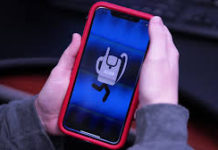According to Science News reports on new technology in development by researchers working jointly between Hokkaido University in Japan and Yonsei University in Korea. This special metamaterial (the name for materials that seem to behave in ways that defy conventional logic) allows for the clearer transmission of sound traveling out of the water and into the air.
According to Oliver Wright, head physicist at Hokkaido University, this metamaterial increases that transmission by as much as 30%. Compared to average sound transmission between water and air of only 0.1%, this is a staggering discovery with too many scientific implementations to count.
While real world applications are still a ways off and need to be tested, the use of this metamaterial in a purely hypothetical perspective could significantly change how we monitor sound underwater. At the moment, underwater hydrophones are the only efficient way to pick up sounds in the water, but using the metamaterial in the form of the “noisemaker” (a metal cylinder with a weighted rubber membrane stretched across it, could be much simpler. The noisemaker would sit atop a body of water, picking up soundwaves moving through the water and vibrating to translate them into audible sounds in the air.
Even so, many are skeptical about the noisemaker’s use practically, with physicist Oleg Godin of the Naval Postgraduate School in California going so far to call it “wishful thinking.” A major problem with the device is that it, at the moment, cannot accurately pick up sounds hitting the surface of the water at an angle. While it works exceptionally for sounds moving in a single direction directly below it, sounds moving in other directions would be almost impossible to decipher. This would effectively render the noisemaker useless for anything but monitoring the space right underneath in a body of water.
Despite the setbacks, however, scientists are still optimistic about what the metamaterial could be used for. They intend to continue testing, with ideas currently placed in favor of using multiple devices in tandem to cover more area.





